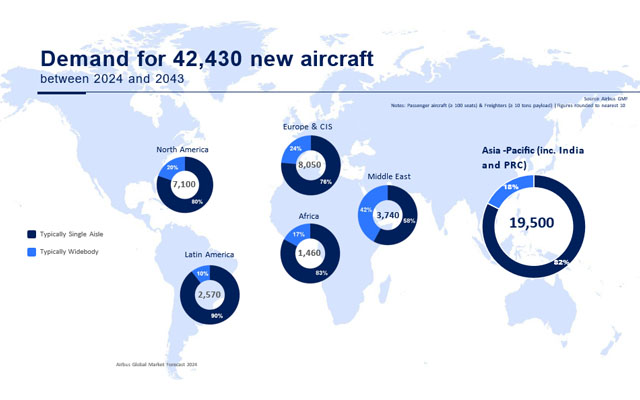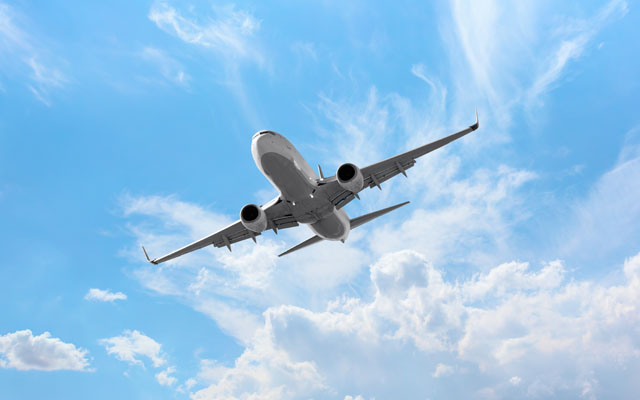Airbus has released its latest regional market forecast, forecasting that the Asia-Pacific aviation sector will require 19,500 new aircraft over the next 20 years.
This demand represents 46 per cent of the global requirement, which is expected to reach around 42,430 new aircraft by 2043.

Anand Stanley, president of Airbus Asia-Pacific, presented these findings during the Association of Asia-Pacific Airlines’ Annual Assembly of Presidents in Brunei, underscoring the region’s continued growth and importance in the global aviation market.
The Asia-Pacific forecast, which includes China and India, reflects a year-on-year growth of three per cent in terms of new aircraft needed. With this surge in demand, the region’s fleet will continue to expand, driven by both growth and replacement needs, with sustainability initiatives becoming more prevalent.
Airbus anticipates the need for 16,000 single-aisle aircraft, such as the A220 and A320neo Family, to support the region’s short- and medium-haul routes. At the same time, demand for medium- and large-sized long-range aircraft, like the A330neo and A350, will total approximately 3,500 aircraft. Key recent widebody aircraft orders in the region include Cathay Pacific (A330neo), as well as EVA Air, Japan Airlines and Korean Air (A350), with several other ongoing campaigns expected to fuel growth.
Airbus estimates that nearly 71 per cent of the aircraft deliveries will support fleet expansion, while 29 per cent will replace older models, significantly contributing to decarbonisation efforts. The next generation of Airbus widebody aircraft offers an immediate 25 per cent improvement in fuel efficiency and a corresponding reduction in carbon emissions. These advancements reflect Airbus’ commitment to supporting the aviation industry’s goal of minimising its environmental footprint.
The Asia-Pacific region is projected to have an annual growth rate of 4.8 per cent, outpacing the global growth rate of 3.6 per cent, with widebody aircraft playing a pivotal role in enhancing passenger connectivity.
The A350 has established itself as the leader in longhaul travel, with nearly 300 A350s already in service in Asia-Pacific and another 230 on order.
At the same time, the A330ceo replacement cycle is underway, with some 540 A330ceos currently operating in the region. The A330neo is positioned as the optimal replacement, offering a seamless transition for airlines, with commonality in pilot training and technical operations between the two models.
Stanley stated: “As one of the fastest-growing aviation markets in the world, the Asia-Pacific region is poised for significant growth over the next two decades. With rising demand for both passenger and cargo operations, we are well-positioned to help our airline partners meet their long-term goals with the most efficient, sustainable, and advanced aircraft available, while contributing to decarbonisation efforts across the industry.”











